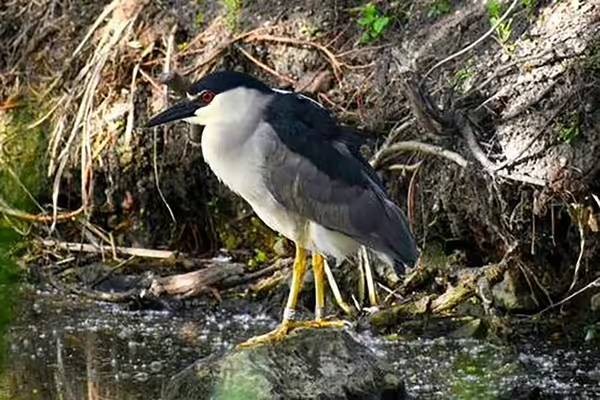
URBANA, Ill. — Among the snowbirds returning north for the summer, A24 is special. For one thing, A24 is an actual bird: a Black-crowned night heron, to be exact. And it has just returned to Chicago to join hundreds of its kind nesting near Lake Michigan. But unlike the human snowbirds that share A24’s migratory habits, this bird is helping to inform conservation efforts in the city and far beyond.
A24 and its heron family need all the help they can get. These wading birds are declining across much of their historic range in the U.S., and are listed as a special-status species in 11 states. University of Illinois Urbana-Champaign professor Mike Ward says the number of breeding colonies has dropped dramatically over the last 30 years as critical wetland habitats have been destroyed or degraded by agricultural and urban development.
“Continued anthropogenic disturbance has caused long-term colonies to be abandoned,” added Brad Semel, Illinois Department of Natural Resources endangered species recovery specialist. “This has been particularly true in Illinois, where the species has been listed as state-endangered since 1977. The single remaining major rookery is located at the Lincoln Park Zoo near downtown Chicago.”
Since the birds’ arrival in the Lincoln Park area in 2007, biologists with the zoo’s Urban Wildlife Institute have monitored the colony closely. They say it appears to be flourishing despite the inherent risks associated with nesting in a highly urbanized area. Henry Adams, UWI’s wildlife management coordinator, said over 300 breeding pairs fledged more than 400 chicks in 2023.
Read the full release from the College of Agricultural, Consumer and Environmental Sciences.
Illinois Extension leads public outreach for University of Illinois by translating research into action plans that allow Illinois families, businesses, and community leaders to solve problems, make informed decisions, and adapt to changes and opportunities. Illinois Extension is part of the University of Illinois Urbana-Champaign College of Agricultural, Consumer and Environmental Sciences.